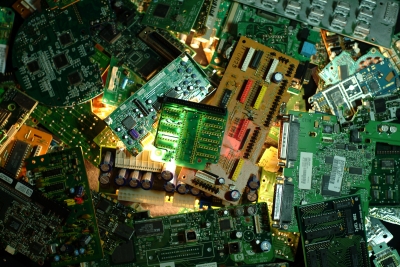The e-scrap industry was thus facing “a lot of challenges” and may have to reshape itself, he told the BIR E-Scrap Committee meeting in Barcelona on May 28.
The Committee’s Chairman Dr Thomas Papageorgiou of Anamet SA in Greece agreed that China’s change of approach to mixed plastics and mixed metals had “affected the business significantly”, creating “a challenge and an opportunity” for the industry in Europe where many investments in new capacity and output improvements were being seen. He described himself as “very optimistic” about prospects for Europe.
According to Surendra Patawari Borad of Gemini Corporation, key recent developments in India had included: a potentially “game-changing” shift in rules governing the importation of second-hand goods for repair, re-engineering and refurbishment; and an amendment of the country’s e-waste rules to establish a collection target for producers of 10% for e-waste generated, rising by 10 percentage points every year to 2023.
With India projected to generate around 3 million tons of e-waste in 2018, he suggested e-scrap processing would become “a big business” in the country.
The centrepiece of the E-Scrap Committee meeting in Barcelona was a presentation by Professor Katia Lasaridi of Harokopio University in Greece to accompany the release of a BIR-commissioned study into both national arisings and transboundary movements of e-scrap (see press release on BIR website dated May 28). One of the key conclusions is that global generation of e-scrap could soar from 41.2 million tonnes in 2016 to almost 54 million tonnes by the year 2025. The fastest growth is projected for the Asia-Pacific region where generation is expected to surge from 3.6 kg per inhabitant to 5 kg over the same nine-year period.
The E-Scrap Committee meeting was also updated by BIR Trade & Environment Director Ross Bartley on the progress of technical guidelines on transboundary movements of electrical and electronic waste and used electrical and electronic equipment. Through its involvement in the discussions to date, BIR had secured equal treatment for recyclers with OEMs in such areas as warranties, he reported.






